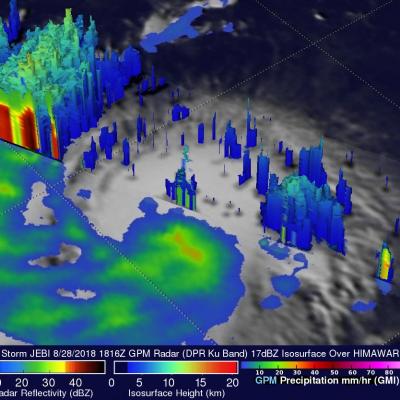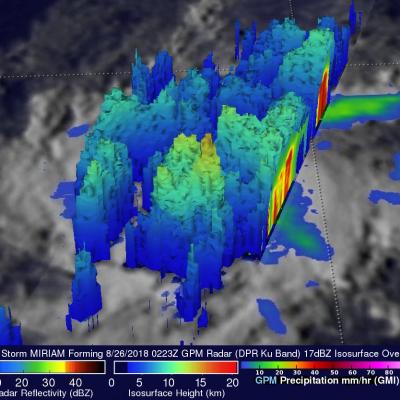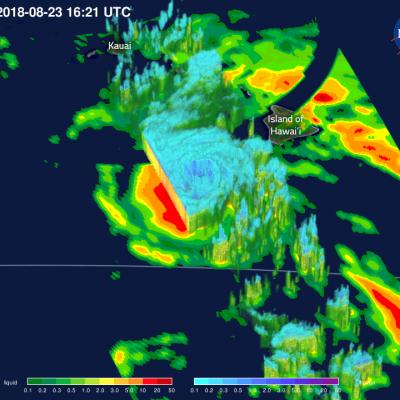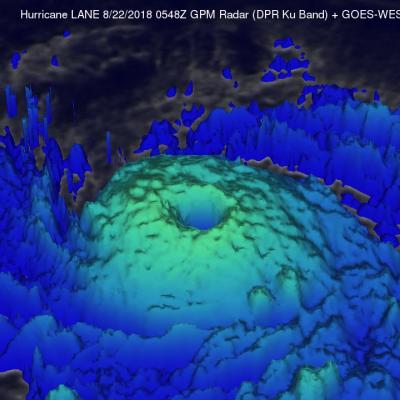GPM Views Super Typhoon Jebi Twice
UPDATE 8/31/18 View Fullscreen in STORM Event Viewer Having peaked in intensity, Typhoon Jebi is a Category 5 Super Typhoon with maximum winds estimated around 142 knots. It is beginning an eyewall replacement cycle with a gap between the outer and inner eyewalls appearing somewhat in the DPR. The storm's strength is expected to fluctuate but remain well above Category 3 for the next two days before it turns northward toward Japan. It will likely have widespread impacts on Southern Honshu in around 4 days time, an area that has already struggled with rainfall, typhoons, and intense heat this






